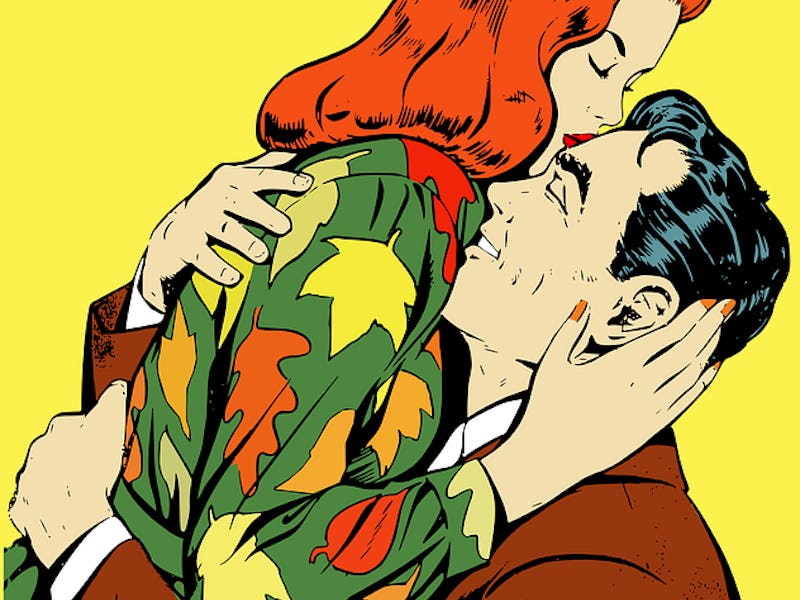'Cuffing Season' Is Sociology Fan Fiction
The human mating season is... right now.

Professional marketers tell us that autumn is the time for pumpkin spice lattes, apple cider, new winter coats, and smart movies. The internet tells us it’s “cuffing season,” which is a nice bourgeois phrase for bed-filling time. As the story goes, single people generally try to find winter cuddle buddies by late October so they have people to bring to office parties, and introduce to the family nearer to the holidays. Things crescendo around New Year’s, and go south by Valentine’s Day. By the time March Madness kicks off, there is no one left to share the sheets.
In other words, there’s a pop sociological consensus about a behavioral pattern that would — if it were real — potentially indicate a biological phenomenon. And, yes, self-appointed experts have claimed cuffing is proof that humans have a mating season. And, no, we don’t. Cuffing season is an interesting idea and nothing more.
“The trouble comes in nailing down the definition,” says Peter Jonason, a behavioral and social psychologist at Western Sydney University. What counts as a relationship? When does cuffing season begin and end? Defined relationships are a fuzzy concept today, making the definition of a “mating” season all the more difficult to apply. And mating seasons are most prevalent in animals that exhibit migratory behaviors.
In humans, however, seasonal mating offers no evolutionary advantage. This is partially because human women are capable of getting pregnant and feeding their young throughout the year. This is why chimpanzees, whose DNA and biological structures are the most similar to humans, among all animals, don’t wait until spring to get after it. Chimpanzee and human females are, Jonason argues, always receptive. It’s a defining characteristic of the species.
“When females are ready to have sex, they have sex,” Jonason says. “If there was a mating season, then babies would be born in March through the spring, when food was available so they could be fed — and that’s not happening.” Babies are born all year round with no discernible spikes or valleys; there are no patterns of tropical birth or births in the northern hemisphere.
So why does cuffing seem like a thing? There’s no question that there seems to be a rise — at least anecdotally — of couples who pair off in the fall through the winter, breaking up come spring. Jonason — and many others — strongly argue that cuffing season is actually a Western sociocultural construct, pushed by pop culture and rom-coms. He points out that not only do Thanksgiving, Christmas and New Year’s — holidays that pressure some people to have someone by their side — fall during this time, cuffing season also mirrors the calendars used in higher education.
“There are social pressures to pair up at those times, and we might not even be aware of it,” he said. “Universities start up again in the fall, and you’re meeting new people. Even if you’re not in school, fall often signifies a new time of year, and change at work and at home.”
In fact, Jonason argues that the fact that cuffing isn’t a thing is actually pro-feminist: It allows women control over their bodies, when they want to have babies, and gives them the freedom to have children when it’s convenient for them.
Even if cuffing season isn’t real, Jonason doesn’t think the fantasy of pairing off in time for sweater weather will go away. “Oh no, no, no,” he said. “Quite the opposite. We live in a society where there are pressures to be in a relationship, to find someone, to fall in love. Even if you want to be single, there’s a pressure to pair off, and cuffing season enforces that.”